Developing Comprehensive Local Climate Zone Land Use Datasets for Advanced High-Resolution Urban Climate and Environmental Modeling
Abstract
1. Introduction
2. Materials and Methodology
2.1. Study Area
2.2. LCZ Classification System and Ground Object Features
2.3. LCZ Mapping Method
2.4. Accuracy Assessment
3. Results and Discussion
3.1. LCZ Map
3.2. Overall Accuracy
| Area | Reference | City | Data Source | The Number of Training Samples | |
|---|---|---|---|---|---|
| Europe and the United States | Bechtel et al. [28] | Houston | Landsat, Google Earth | 128 | 96% |
| Wang et al. [41] | Phoenix | Landsat, Google Earth | _____ _____ | 82% 82% | |
| Las Vegas | Landsat, Google Earth | ||||
| Demuzere et al. [43] | All cities in Europe | Sentinel-1 SAR, Various spectral data | 2700 | >95% | |
| Fonte et al. [44] | Hamburg | Landsat, OSM, Google Earth | _____ | 58% | |
| Verdonck et al. [48] | Antwerp | Landsat, Google Earth | 79 | 86% 80% 90% | |
| Brussels | 74 | ||||
| Ghent | 100 | ||||
| McRae et al. [53] | San Jose | Landsat, Google Earth | 921 | 62% | |
| Mouzourides et al. [59] | London | Landsat, Google Earth | 312 | 75% | |
| India | Patel et al. [14] | Mumbai | Landsat, Google Earth | _____ | 86% |
| Sudan | Bechtel et al. [28] | Khartoum | Landsat, Google Earth | _____ | 97% |
| Zimbabwe | Mushore et al. [54] | Harare | Landsat, Google Earth | 157 | 96% |
| Thailand | Khamchiangta et al. [60] | Bangkok | Landsat, Google Earth | _____ | 76% |
| Japan | Zhou et al. [65] | Sendai | Landsat, Google Earth | _____ | 93% |
| China | Wang et al. [41] | Hong Kong | Landsat, Google Earth | 850 | 76% |
| Ren et al. [45] | 20 cities in China | Landsat, Google Earth | 850 | 75% | |
| Cai et al. [55] | Guangzhou | Landsat, Google Earth | 850 | 84% | |
| Cai et al. [56] | YRD Shanghai Hangzhou | Landsat, Google Earth, Aster | 850 | 67% | |
| Shi et al. [58] | BTH | Landsat, Google Earth | _____ | 58% | |
| Wang et al. [57] | YRD | Landsat, Google Earth | _____ | 76% | |
| Xu et al. [61] | Guangzhou | Landsat, Google Earth | 29,725 | 62% | |
| Matthias Demuzere et al. [62] | PRD | Landsat8, PALSAR, Sentinel-1, Sentinel-2, VIIRS | 400 | 75% | |
| This study | Guangzhou | Landsat, Google Earth | 1800 | 67% | |
| 2100 | 76% | ||||
| _____ | 80% | ||||
| PRD | 1700 | 76% | |||
| Beijing | _____ | 72% | |||
| Harbin | _____ | 72% | |||
| Lhasa | _____ | 70% | |||
| 63 major cities and 4 regions in China | 76,000 | 82% | |||
| BTH | 9100 | 89% |
3.3. Accuracy Evaluation of Typical Large Cities and Urban Agglomerations
3.3.1. Overall Accuracy of Four Urban Agglomerations
3.3.2. Classification Accuracy Per Class
3.3.3. Reasons for the Difference in LCZ Classification Accuracy
3.4. Proportion of LCZ Classifications Newly Added in Big Cities
4. Conclusions
5. Limitations and Outlook
Supplementary Materials
Author Contributions
Funding
Data Availability Statement
Acknowledgments
Conflicts of Interest
References
- Li, J.; Mahalov, A.; Hyde, P. Simulating the effects of chronic ozone exposure on hydrometeorology and crop productivity using a fully coupled crop, meteorology and air quality modeling system. Agric. For. Meteorol. 2018, 260–261, 287–299. [Google Scholar] [CrossRef]
- Jee, J.-B.; Kim, S. Sensitivity Study on High-Resolution Numerical Modeling of Static Topographic Data. Atmosphere 2016, 7, 86. [Google Scholar] [CrossRef]
- Su, X.; Wang, F.; Zhou, D.; Zhang, H. Assessing the Spatial Variability of Daytime/Nighttime Extreme Heat Waves in Beijing under Different Land-Use during 2011–2020. Land 2022, 11, 1786. [Google Scholar] [CrossRef]
- Macinnis-Ng, C.M.; Flores, E.E.; Müller, H.; Schwendenmann, L. Throughfall and stemflow vary seasonally in different land-use type in a lower montane tropical region of Panama. Hydrol. Process. 2014, 28, 2174–2184. [Google Scholar] [CrossRef]
- Li, Y.; Liu, D.; Li, T.; Fu, Q.; Liu, D.; Hou, R.; Meng, F.; Li, M.; Li, Q. Responses of spring soil moisture of different land use type to snow cover in Northeast China under climate change background. J. Hydrol. 2022, 608, 127610. [Google Scholar] [CrossRef]
- Deng, J.; Xiao, J.; Ouimette, A.; Zhang, Y.; Sanders-DeMott, R.; Frolking, S.; Li, C. Improving a Biogeochemical Model to Simulate Surface Energy, Greenhouse Gas Fluxes, and Radiative Forcing for Different Land Use type in Northeastern United States. Glob. Biogeochem. Cycles 2020, 34. [Google Scholar] [CrossRef]
- Mohan, M.; Kandya, A. Impact of urbanization and land-use/land-cover change on diurnal temperature range: A case study of tropical urban airshed of India using remote sensing data. Sci. Total Environ. 2015, 506–507, 453–465. [Google Scholar] [CrossRef]
- Chenchao, Z.; Min, X. Land use and anthropogenic heat modulate ozone by meteorology: A perspective from the Yangtze River Delta region. Atmos. Chem. Phys. 2022, 22, 1351–1371. [Google Scholar]
- Thunis, P.; Rouil, L.; Cuvelier, C.; Stern, R.; Kerschbaumer, A.; Bessagnet, B.; Schaap, M.; Builtjes, P.; Tarrason, L.; Bedogni, M.; et al. Analysis of model responses to emission-reduction scenarios within the CityDelta project. Atmos. Environ. 2006, 41, 208–220. [Google Scholar] [CrossRef]
- Ribeiro, I.; Martilli, A.; Falls, M.; Zonato, A.; Villalba, G. Highly resolved WRF-BEP/BEM simulations over Barcelona urban area with LCZ. Atmos. Res. 2021, 248, 105220. [Google Scholar] [CrossRef]
- Zonato, A.; Martilli, A.; Di Sabatino, S.; Zardi, D.; Giovannini, L. Evaluating the performance of a novel WUDAPT averaging technique to define urban morphology with mesoscale models. Urban Clim. 2020, 31, 100584. [Google Scholar] [CrossRef]
- Franco, D.M.P.; de Fatima Andrade, M.; Ynoue, R.Y.; Ching, J. Effect of Local Climate Zone (LCZ) classification on ozone chemical transport model simulations in Sao Paulo, Brazil. Urban Clim. 2019, 27, 293–313. [Google Scholar] [CrossRef]
- Yang, H.; Leng, Q.; Xiao, Y.; Chen, W. Investigating the impact of urban landscape composition and configuration on PM2.5 concentration under the LCZ scheme: A case study in Nanchang, China. Sustain. Cities Soc. 2022, 84, 104006. [Google Scholar] [CrossRef]
- Patel, P.; Karmakar, S.; Ghosh, S.; Niyogi, D. Improved simulation of very heavy rainfall events by incorporating WUDAPT urban land use/land cover in WRF. Urban Clim. 2020, 32, 100616. [Google Scholar] [CrossRef]
- Zhang, Y.; Cao, S.; Zhao, L.; Cao, J. A case application of WRF-UCM models to the simulation of urban wind speed profiles in a typhoon. J. Wind. Eng. Ind. Aerodyn. 2022, 220, 104874. [Google Scholar] [CrossRef]
- Patel, P.; Jamshidi, S.; Nadimpalli, R.; Aliaga, D.G.; Mills, G.; Chen, F.; Demuzere, M.; Niyogi, D. Modeling Large-Scale Heatwave by Incorporating Enhanced Urban Representation. J. Geophys. Res. Atmos. 2022, 127. [Google Scholar] [CrossRef]
- Mughal, M.O.; Li, X.X.; Norford, L.K. Urban heat island mitigation in Singapore: Evaluation using WRF/multilayer urban canopy model and local climate zones. Urban Clim. 2020, 34, 100714. [Google Scholar] [CrossRef]
- Zhang, Z.; Wang, X.; Zhao, X.; Liu, B.; Yi, L.; Zuo, L.; Wen, Q.; Liu, F.; Xu, J.; Hu, S. A 2010 update of National Land Use/Cover Database of China at 1:100000 scale using medium spatial resolution satellite images. Remote Sens. Environ. 2014, 149, 142–154. [Google Scholar] [CrossRef]
- Gong, P.; Liu, H.; Zhang, M.; Li, C.; Wang, J.; Huang, H.; Clinton, N.; Ji, L.; Li, W.; Bai, Y.; et al. Stable classification with limited sample: Transferring a 30-m resolution sample set collected in 2015 to mapping 10-m resolution global land cover in 2017. Sci. Bull. 2019, 64, 370–373. [Google Scholar] [CrossRef]
- Shahzad, M.; Zhu, X.X. Automatic detection and reconstruction of 2-D/3-D building shapes from spaceborne TomoSAR point clouds. IEEE Trans. Geosci. Remote Sens. 2015, 54, 1292–1310. [Google Scholar] [CrossRef]
- Zheng, Y.; Weng, Q. Model-driven reconstruction of 3-D buildings using LiDAR data. IEEE Geosci. Remote Sens. Lett. 2015, 12, 1541–1545. [Google Scholar] [CrossRef]
- Wang, P.; Huang, C.; Tilton, J.C. Mapping Three-dimensional Urban Structure by Fusing Landsat and Global Elevation Data. arXiv 2018, arXiv:1807.04368. [Google Scholar]
- Awrangjeb, M.; Gilani, S.A.N.; Siddiqui, F.U. An Effective Data-Driven Method for 3-D Building Roof Reconstruction and Robust Change Detection. Remote. Sens. 2018, 10, 1512. [Google Scholar] [CrossRef]
- Ching, J.; Mills, G.; Bechtel, B.; See, L.; Feddema, J.; Wang, X.; Ren, C.; Brousse, O.; Martilli, A.; Neophytou, M.; et al. WUDAPT: An Urban Weather, Climate, and Environmental Modeling Infrastructure for the Anthropocene. Bull. Am. Meteorol. Soc. 2018, 99, 1907–1924. [Google Scholar] [CrossRef]
- Stewart, I.D.; Oke, T.R.; Krayenhoff, E.S. Evaluation of the ‘local climate zone’ scheme using temperature observations and model simulations. Int. J. Climatol. 2014, 34, 1062–1080. [Google Scholar] [CrossRef]
- Tse, J.W.P.; Yeung, P.S.; Fung, J.C.H.; Ren, C.; Wang, R.; Wong, M.M.F.; Meng, C.A.I. Investigation of the meteorological effects of urbanization in recent decades: A case study of major cities in Pearl River Delta. Urban Clim. 2018, 26, 174–187. [Google Scholar] [CrossRef]
- Gong, P.; Chen, B.; Li, X.; Liu, H.; Wang, J.; Bai, Y.; Chen, J.; Chen, X.; Fang, L.; Feng, S.; et al. Mapping essential urban land use categories in China (EULUC-China): Preliminary results for 2018. Sci. Bull. 2020, 65, 182–187. [Google Scholar] [CrossRef]
- Bechtel, B.; Alexander, P.J.; Böhner, J.; Ching, J.; Conrad, O.; Feddema, J.; Mills, G.; See, L.; Stewart, I. Mapping Local Climate Zones for a Worldwide Database of the Form and Function of Cities. ISPRS Int. J. Geo-Inf. 2015, 4, 199–219. [Google Scholar] [CrossRef]
- Brousse, O.; Martilli, A.; Foley, M.; Mills, G.; Bechtel, B. WUDAPT, an efficient land use producing data tool for mesoscale models? Integration of urban LCZ in WRF over Madrid. Urban Clim. 2016, 17, 116–134. [Google Scholar] [CrossRef]
- Liu, X.; Huang, Y.; Xu, X.; Li, X.; Li, X.; Ciais, P.; Lin, P.; Gong, K.; Ziegler, A.D.; Chen, A.; et al. High-spatiotemporal-resolution mapping of global urban change from 1985 to 2015. Nat. Sustain. 2020, 3, 564–570. [Google Scholar] [CrossRef]
- Li, Z.; Wan, B.; Zhou, Y.; Wong, H. Incoming data quality control in high-resolution urban climate simulations: A Hong Kong–Shenzhen area urban climate simulation as a case study using the WRF/Noah LSM/SLUCM model (Version 3.7.1). Geosci. Model Dev. 2020, 13, 6349–6360. [Google Scholar] [CrossRef]
- Sun, Y.; Zhang, N.; Miao, S.; Kong, F.; Zhang, Y.; Li, N. Urban Morphological Parameters of the Main Cities in China and Their Application in the WRF Model. J. Adv. Model. Earth Syst. 2021, 13, e2020MS002382. [Google Scholar] [CrossRef]
- Stewart, I.D.; Oke, T.R. Local climate zones for urban temperature studies. Bull. Am. Meteorol. Soc. 2012, 93, 1879–1900. [Google Scholar] [CrossRef]
- Johnson, B.A.; Jozdani, S.E. Local Climate Zone (LCZ) Map Accuracy Assessments Should Account for Land Cover Physical Characteristics that Affect the Local Thermal Environment. Remote Sens. 2019, 11, 2420. [Google Scholar] [CrossRef]
- Bechtel, B.; Alexander, P.J.; Beck, C.; Böhner, J.; Brousse, O.; Ching, J.; Demuzere, M.; Fonte, C.; Gál, T.; Hidalgo, J.; et al. Generating WUDAPT Level 0 data—Current status of production and evaluation. Urban Clim. 2019, 27, 24–45. [Google Scholar] [CrossRef]
- Kotharkar, R.; Bagade, A. Local Climate Zone classification for Indian cities: A case study of Nagpur. Urban Clim. 2017, 24, 369–392. [Google Scholar] [CrossRef]
- Zheng, Y.; Ren, C.; Xu, Y.; Wang, R.; Ho, J.; Lau, K.; Ng, E. GIS-based mapping of Local Climate Zone in the high~density city of Hong Kong. Urban Clim. 2017, 24, 419–448. [Google Scholar] [CrossRef]
- Lelovics, E.; Unger, J.; Gál, T.; Gál, C.V. Design of an urban monitoring network based on Local Climate Zone mapping and temperature pattern modelling. Clim. Res. 2014, 60, 51–62. [Google Scholar] [CrossRef]
- Wang, R.; Ren, C.; Xu, Y.; Lau, K.K.L.; Shi, Y. Mapping the local climate zones of urban areas by GIS-based and WUDAPT methods: A case study of Hong Kong. Urban Clim. 2018, 24, 567–576. [Google Scholar] [CrossRef]
- Bechtel, B.; Daneke, C. Classification of Local Climate Zones Based on Multiple Earth Observation Data. IEEE J. Sel. Top. Appl. Earth Obs. Remote Sens. 2012, 5, 1191–1202. [Google Scholar] [CrossRef]
- Wang, C.; Middel, A.; Myint, S.W.; Kaplan, S.; Brazel, A.J.; Lukasczyk, J. Assessing local climate zones in arid cities: The case of Phoenix, Arizona and Las Vegas, Nevada. ISPRS J. Photogramm. Remote. Sens. 2018, 141, 59–71. [Google Scholar] [CrossRef]
- He, S.; Zhang, Y.; Gu, Z.; Su, J. Local climate zone classification with different source data in Xi’an, China. Indoor Built Environ. 2019, 28, 1190–1199. [Google Scholar] [CrossRef]
- Demuzere, M.; Bechtel, B.; Middel, A.; Mills, G. Mapping Europe into local climate zones. PLoS ONE 2019, 14, e0214474. [Google Scholar] [CrossRef] [PubMed]
- Fonte, C.C.; Lopes, P.; See, L.; Bechtel, B. Using OpenStreetMap (OSM) to enhance the classification of local climate zones in the framework of WUDAPT. Urban Clim. 2019, 28, 100456. [Google Scholar] [CrossRef]
- Ren, C.; Cai, M.; Li, X.; Zhang, L.; Wang, R.; Xu, Y.; Ng, E. Assessment of Local Climate Zone Classification Maps of Cities in China and Feasible Refinements. Sci. Rep. 2019, 9, 1–11. [Google Scholar] [CrossRef]
- Bechtel, B.; See, L.; Mills, G.; Foley, M. Classification of Local Climate Zones Using SAR and Multispectral Data in an Arid Environment. IEEE J. Sel. Top. Appl. Earth Obs. Remote Sens. 2016, 9, 3097–3105. [Google Scholar] [CrossRef]
- Ma, Q.; Wang, Y.W.; Miao, S.G.; Zhang, Y.; Mu, Q. Study on construction of land use classification datasets with building type in large cities of China. Trans. Atmos. Sci. 2022, 45, 135–147. [Google Scholar]
- Verdonck, M.L.; Okujeni, A.; van der Linden, S.; Demuzere, M.; De Wulf, R.; Van Coillie, F. Influence of neighbourhood information on ‘Local Climate Zone’mapping in heterogeneous cities. Int. J. Appl. Earth Obs. Geoinf. 2017, 62, 102–113. [Google Scholar]
- Shi, L.; Ling, F. Local Climate Zone Mapping Using Multi-Source Free Available Datasets on Google Earth Engine Platform. Land 2021, 10, 454. [Google Scholar] [CrossRef]
- Zhu, X.X.; Hu, J.; Qiu, C.; Shi, Y.; Kang, J.; Mou, L.; Bagheri, H.; Häberle, M.; Hua, Y.; Wang, Y.; et al. So2Sat LCZ42: A Benchmark Dataset for Global Local Climate Zones Classification. IEEE Geosci. Remote Sens. Mag. 2015, 14, 8. [Google Scholar]
- Ren, C.; Wang, R.; Cai, M.; Xu, Y.; Zheng, Y.; Ng, E. The accuracy of LCZ maps generated by the world urban database and access portal tools (WUDAPT) method: A case study of Hong Kong. In Proceedings of the The Fourth International Conference on Urban Hot Island Countermeasures, Singapore, 30 May–1 June 2016. [Google Scholar]
- Kim, M.; Jeong, D.; Kim, Y. Local climate zone classification using a multi-scale, multi-level attention network. ISPRS J. Photogramm. Remote Sens. 2021, 181, 345–366. [Google Scholar] [CrossRef]
- McRae, I.; Freedman, F.R.; Rivera, A.; Li, X.; Dou, J.; Cruz, I.; Ren, C.; Dronova, I.; Fraker, H.; Bornstein, R. Integration of the WUDAPT, WRF, and ENVI-met models to simulate extreme daytime temperature mitigation strategies in San Jose, California. Build. Environ. 2020, 184, 107180. [Google Scholar] [CrossRef]
- Mushore, T.D.; Dube, T.; Manjowe, M.; Gumindoga, W.; Chemura, A.; Rousta, I.; Odindi, J.; Mutanga, O. Remotely sensed retrieval of Local Climate Zones and their linkages to land surface temperature in Harare metropolitan city, Zimbabwe. Urban Clim. 2019, 27, 259–271. [Google Scholar] [CrossRef]
- Cai, M.; Ren, C.; Xu, Y.; Dai, W.; Wang, X.M. Local Climate Zone Study for Sustainable Megacities Development by Using Improved WUDAPT Methodology—A Case Study in Guangzhou. Procedia Environ. Sci. 2016, 36, 82–89. [Google Scholar] [CrossRef]
- Cai, M.; Ren, C.; Xu, Y.; Lau, K.K.-L.; Wang, R. Investigating the relationship between local climate zone and land surface temperature using an improved WUDAPT methodology—A case study of Yangtze River Delta, China. Urban Clim. 2018, 24, 485–502. [Google Scholar] [CrossRef]
- Wang, R.; Cai, M.; Ren, C.; Bechtel, B.; Xu, Y.; Ng, E. Detecting multi-temporal land cover change and land surface temperature in Pearl River Delta by adopting local climate zone. Urban Clim. 2019, 28, 100455. [Google Scholar] [CrossRef]
- Shi, Y.; Ren, C.; Lau, K.K.-L.; Ng, E. Investigating the influence of urban land use and landscape pattern on PM2.5 spatial variation using mobile monitoring and WUDAPT. Landsc. Urban Plan. 2019, 189, 15–26. [Google Scholar] [CrossRef]
- Mouzourides, P.; Eleftheriou, A.; Kyprianou, A.; Ching, J.; Neophytou, M.K.-A. Linking local-climate-zones mapping to multi-resolution-analysis to deduce associative relations at intra-urban scales through an example of Metropolitan London. Urban Clim. 2019, 30, 100505. [Google Scholar] [CrossRef]
- Khamchiangta, D.; Dhakal, S. Future urban expansion and local climate zone changes in relation to land surface temperature: Case of Bangkok Metropolitan Administration, Thailand. Urban Clim. 2021, 37, 100835. [Google Scholar] [CrossRef]
- Xu, Y.; Ren, C.; Cai, M.; Wang, R. Issues and challenges of remote sensing-based local climate zone mapping for high-density cities. In Proceedings of the 2017 Joint Urban Remote Sensing Event (JURSE), Dubai, United Arab Emirates, 6–8 March 2017; IEEE: New York City, NY, USA; pp. 1–4. [Google Scholar]
- Demuzere, M.; Kittner, J.; Martilli, A.; Mills, G.; Moede, C.; Stewart, I.D.; van Vliet, J.; Bechtel, B. A global map of local climate zones to support earth system modelling and urban-scale environmental science. Earth Syst. Sci. Data 2022, 14, 3835–3873. [Google Scholar] [CrossRef]
- Yoo, C.; Han, D.; Im, J.; Bechtel, B. Comparison between convolutional neural networks and random forest for local climate zone classification in mega urban areas using Landsat images. ISPRS J. Photogramm. Remote Sens. 2019, 157, 155–170. [Google Scholar] [CrossRef]
- Zheng, J.; Zhao, Y.; Wu, W.; Chen, M.; Li, W.; Fu, H. Partial Domain Adaptation for Scene Classification From Remote Sensing Imagery. IEEE Trans. Geosci. Remote Sens. 2023, 61, 5601317. [Google Scholar] [CrossRef]
- Zheng, J.; Wu, W.; Yuan, S.; Zhao, Y.; Li, W.; Zhang, L.; Dong, R.; Fu, H. A Two-Stage Adaptation Network (TSAN) for Remote Sensing Scene Classification in Single-Source-Mixed-Multiple-Target Domain Adaptation (S²M²T DA) Scenarios. IEEE Trans. Geosci. Remote Sens. 2022, 60, 5609213. [Google Scholar] [CrossRef]
- Abdelkader, M.; Temimi, M.; Colliander, A.; Cosh, M.H.; Kelly, V.R.; Lakhankar, T.; Fares, A. Assessing the Spatiotemporal Variability of SMAP Soil Moisture Accuracy in a Deciduous Forest Region. Remote Sens. 2022, 14, 3329. [Google Scholar] [CrossRef]
- Liu, S.; Shi, Q. Local climate zone mapping as remote sensing scene classification using deep learning: A case study of metropolitan China. ISPRS J. Photogramm. Remote Sens. 2020, 164, 229–242. [Google Scholar] [CrossRef]
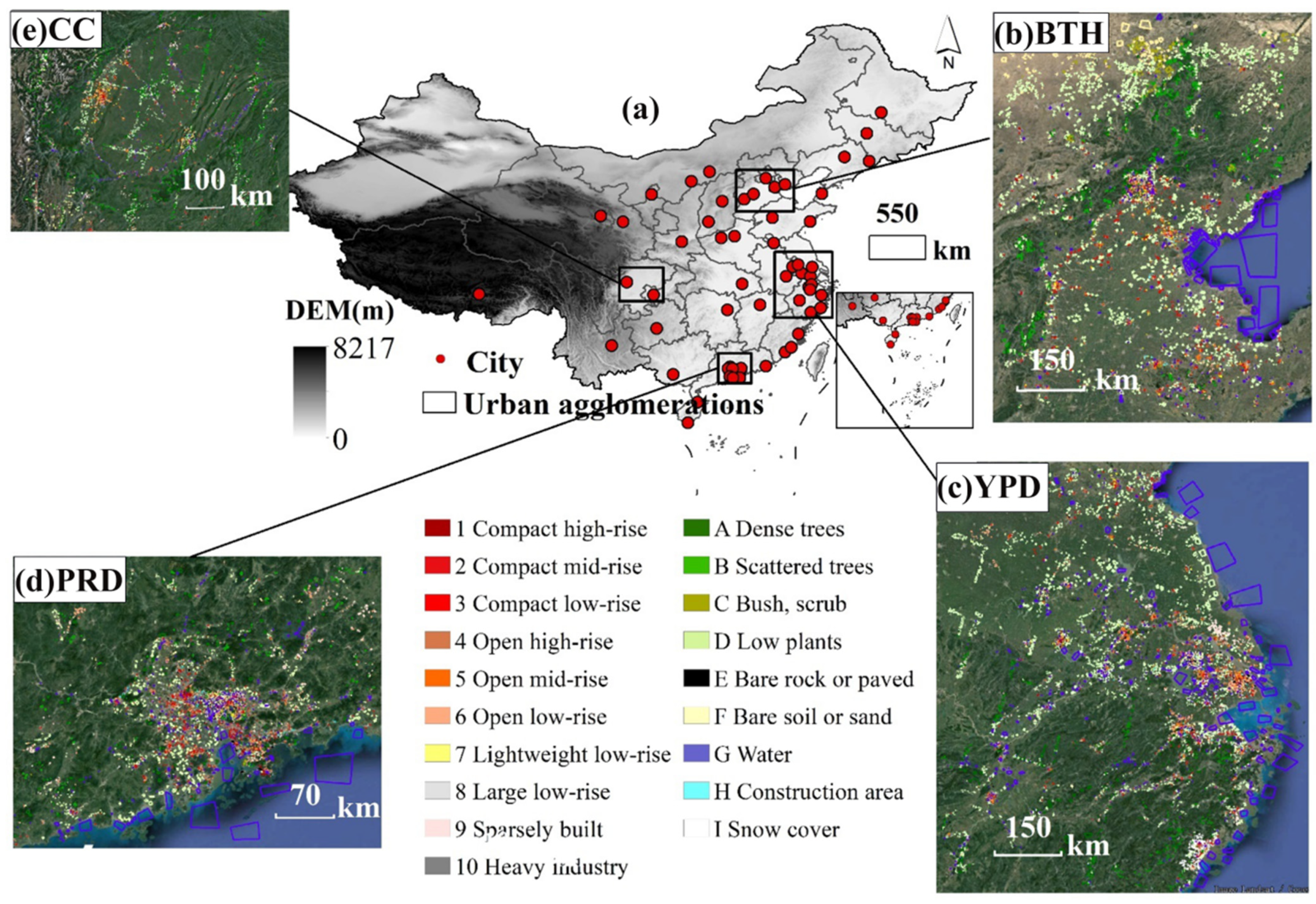
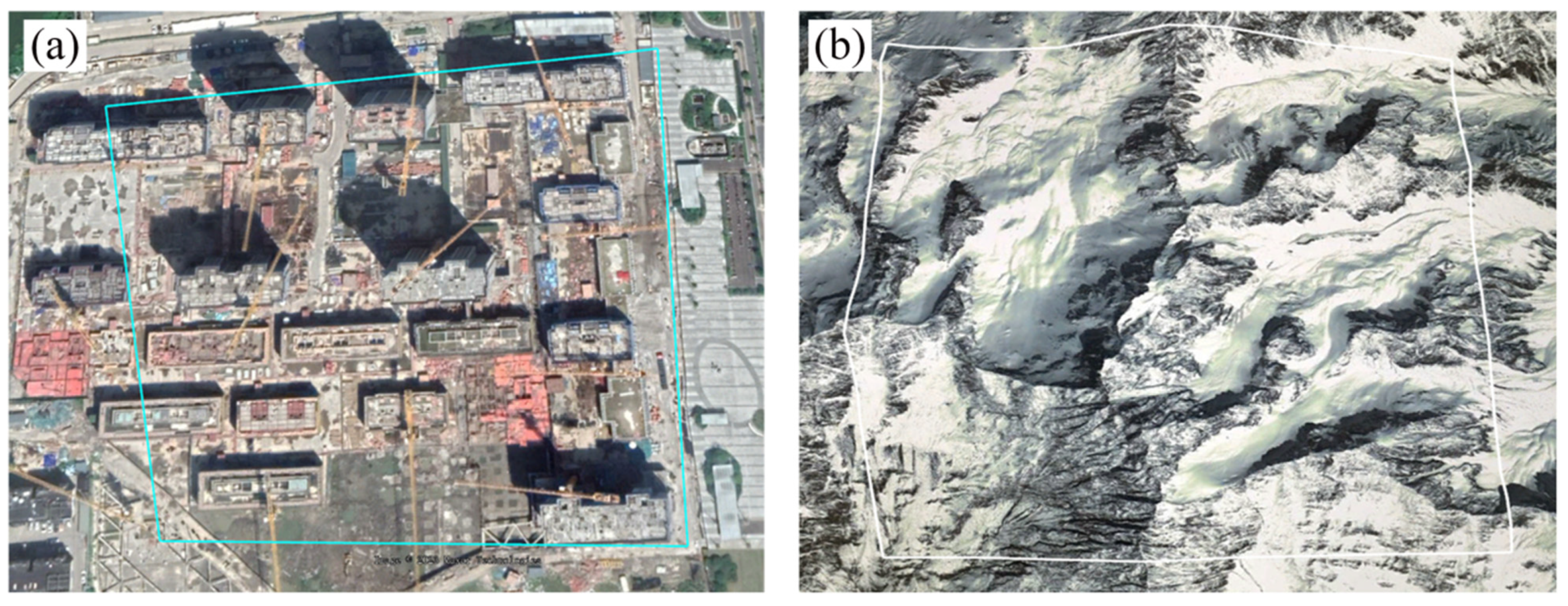

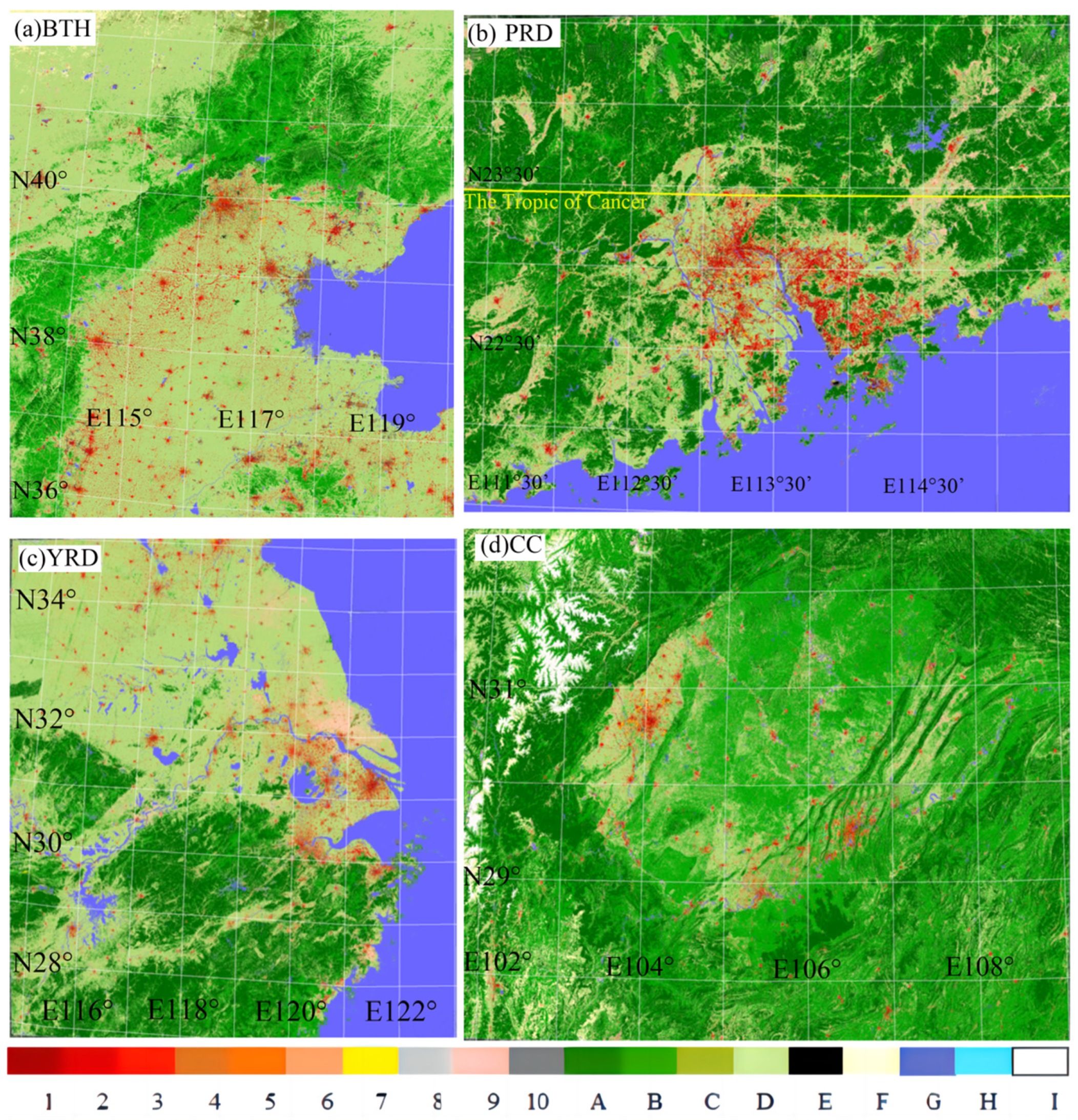


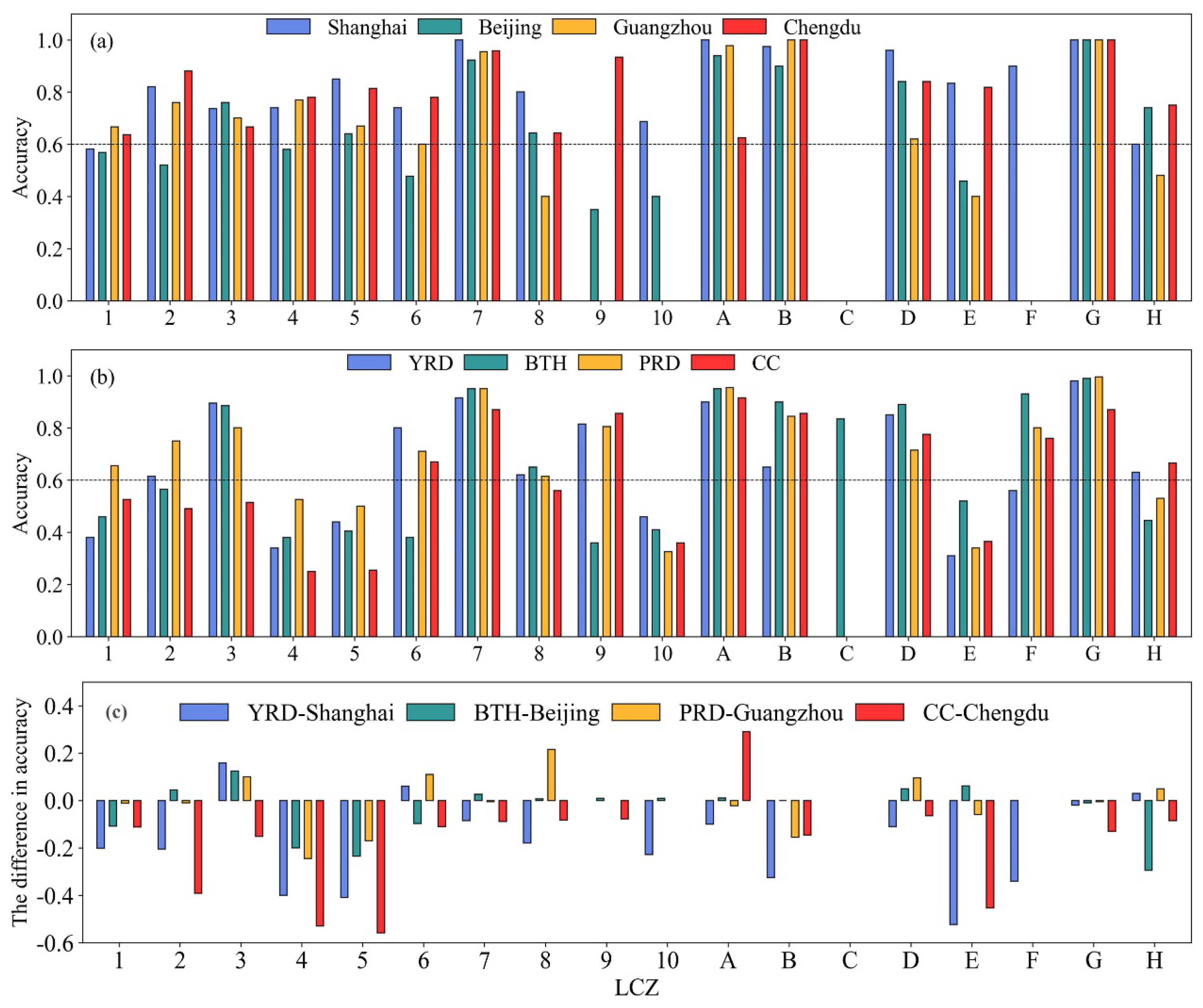
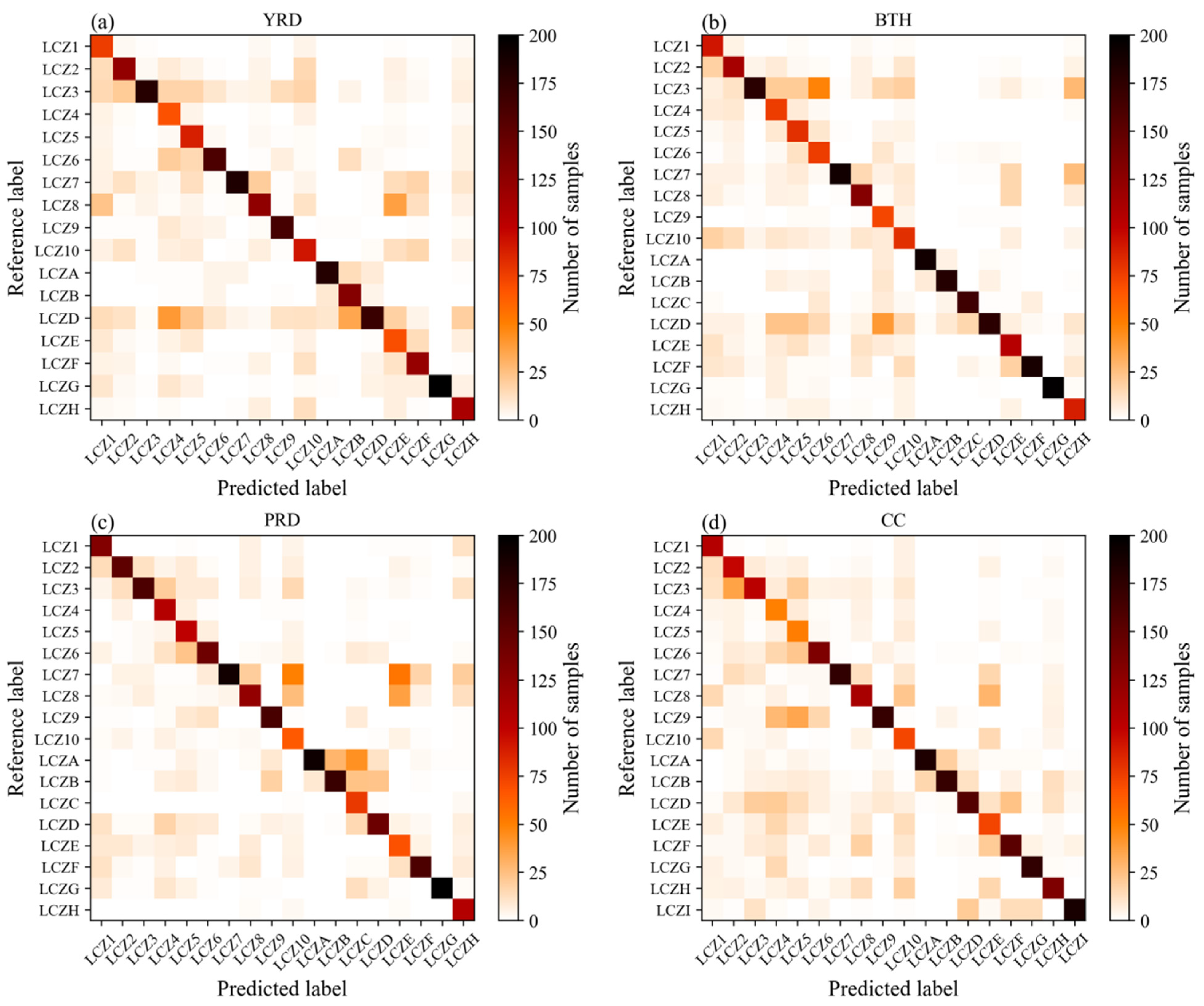

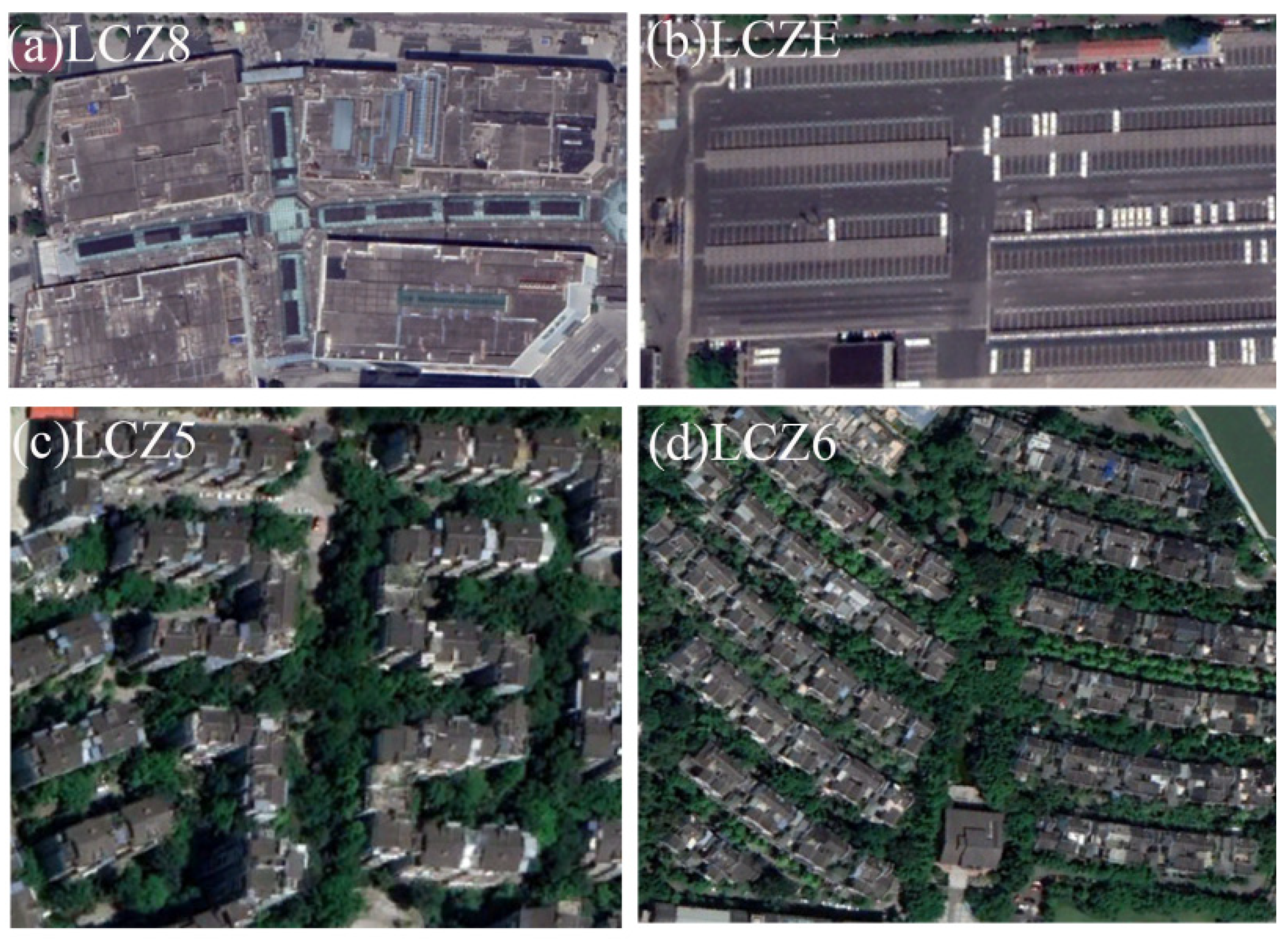


| LCZ 1 Compact high-rise | LCZ 2 Compact mid-rise | LCZ 3 Compact low-rise | LCZ 4 Open high-rise | LCZ 5 Open mid-rise |
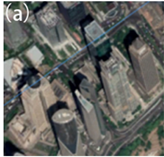 | 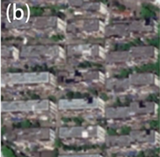 | 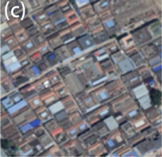 | 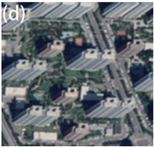 | 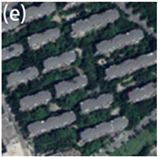 |
| LCZ 6 Open low-rise | LCZ 7 Lightweight low-rise | LCZ 8 Large low-rise | LCZ 9 Sparsely built | LCZ 10 Heavy industry |
 |  |  | 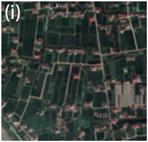 | 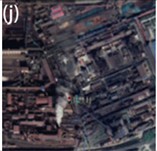 |
| LCZ A Dense trees | LCZ B Scattered trees | LCZ C Bush, scrub | LCZ D Low plants | LCZ E Bare rock or paved |
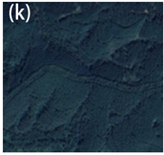 |  | 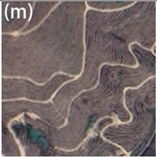 | 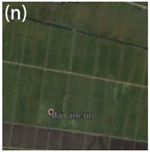 | 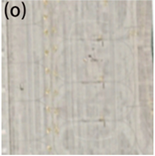 |
| LCZ F Bare soil or sand | LCZ G Water | LCZ H Construction area | LCZ I Snow cover | |
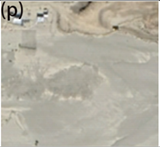 | 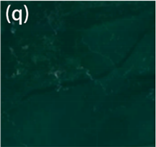 |  | 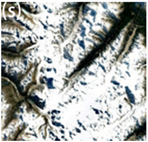 |
| Urban Agglomeration or City | OA (%) | OAu (%) | OAn (%) |
|---|---|---|---|
| YRD | 87 | 72 | 88 |
| Shanghai | 84 | 78 | 96 |
| BTH | 89 | 68 | 90 |
| Beijing | 72 | 64 | 84 |
| PRD | 88 | 72 | 89 |
| Guangzhou | 75 | 72 | 79 |
| CC | 85 | 66 | 86 |
| Chengdu | 81 | 79 | 85 |
Disclaimer/Publisher’s Note: The statements, opinions and data contained in all publications are solely those of the individual author(s) and contributor(s) and not of MDPI and/or the editor(s). MDPI and/or the editor(s) disclaim responsibility for any injury to people or property resulting from any ideas, methods, instructions or products referred to in the content. |
© 2023 by the authors. Licensee MDPI, Basel, Switzerland. This article is an open access article distributed under the terms and conditions of the Creative Commons Attribution (CC BY) license (https://creativecommons.org/licenses/by/4.0/).
Share and Cite
Wang, Y.; Zhao, D.; Ma, Q. Developing Comprehensive Local Climate Zone Land Use Datasets for Advanced High-Resolution Urban Climate and Environmental Modeling. Remote Sens. 2023, 15, 3111. https://doi.org/10.3390/rs15123111
Wang Y, Zhao D, Ma Q. Developing Comprehensive Local Climate Zone Land Use Datasets for Advanced High-Resolution Urban Climate and Environmental Modeling. Remote Sensing. 2023; 15(12):3111. https://doi.org/10.3390/rs15123111
Chicago/Turabian StyleWang, Yongwei, Danmeng Zhao, and Qian Ma. 2023. "Developing Comprehensive Local Climate Zone Land Use Datasets for Advanced High-Resolution Urban Climate and Environmental Modeling" Remote Sensing 15, no. 12: 3111. https://doi.org/10.3390/rs15123111
APA StyleWang, Y., Zhao, D., & Ma, Q. (2023). Developing Comprehensive Local Climate Zone Land Use Datasets for Advanced High-Resolution Urban Climate and Environmental Modeling. Remote Sensing, 15(12), 3111. https://doi.org/10.3390/rs15123111





